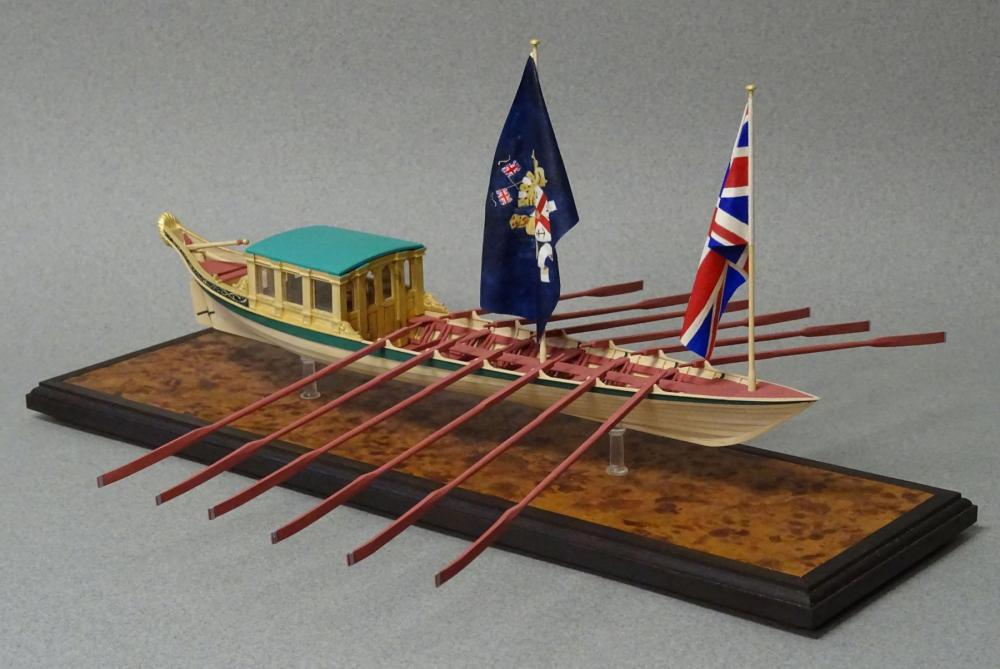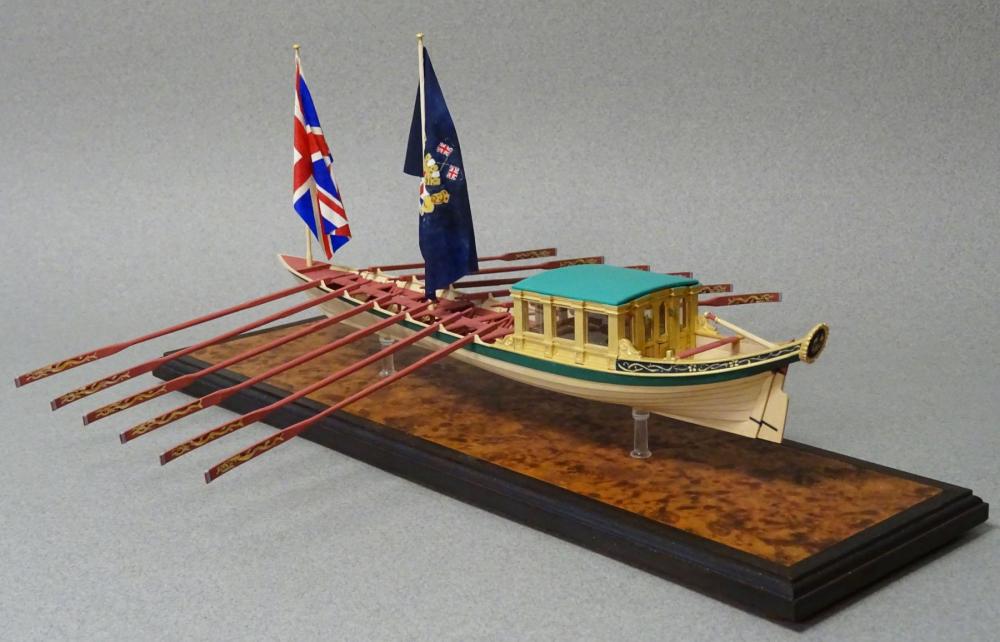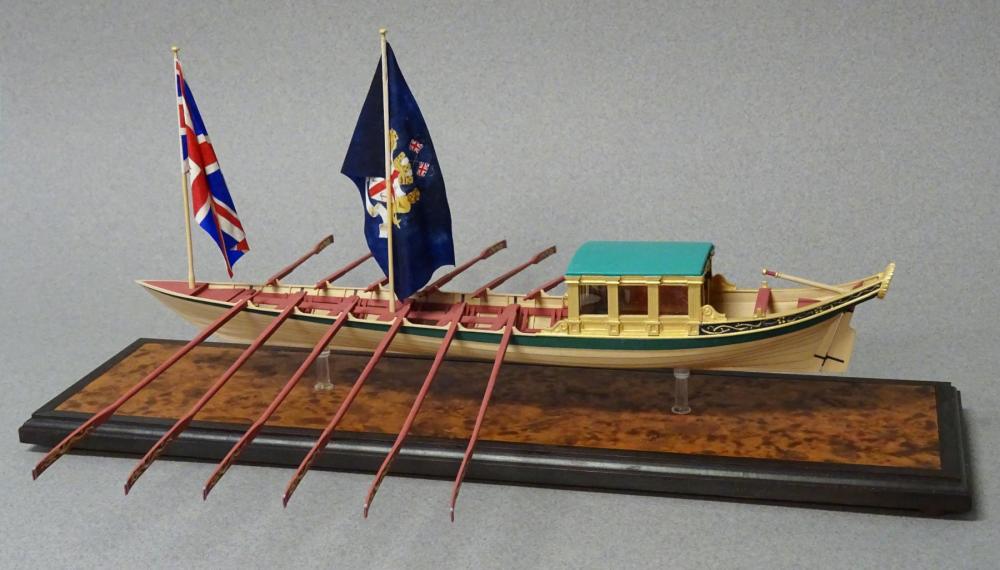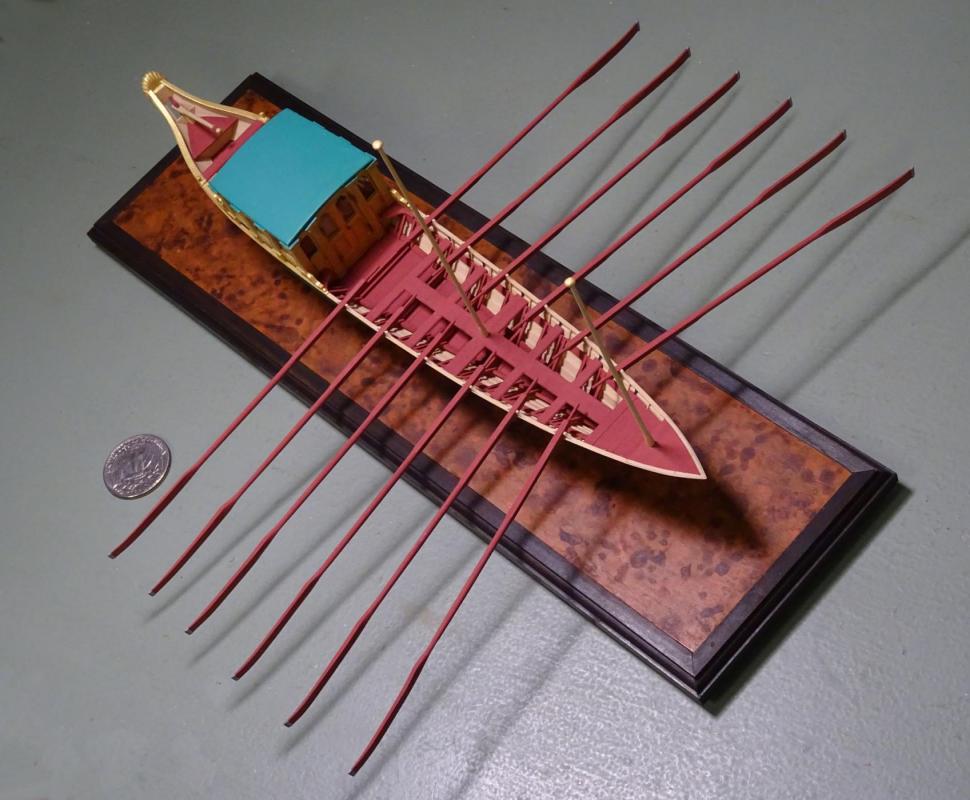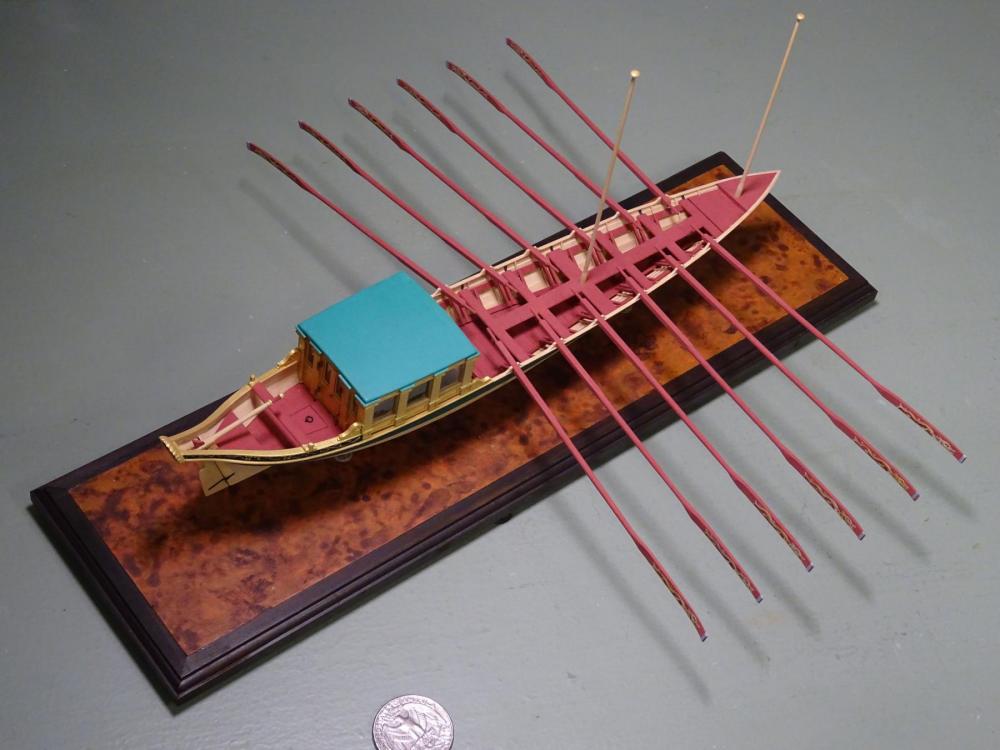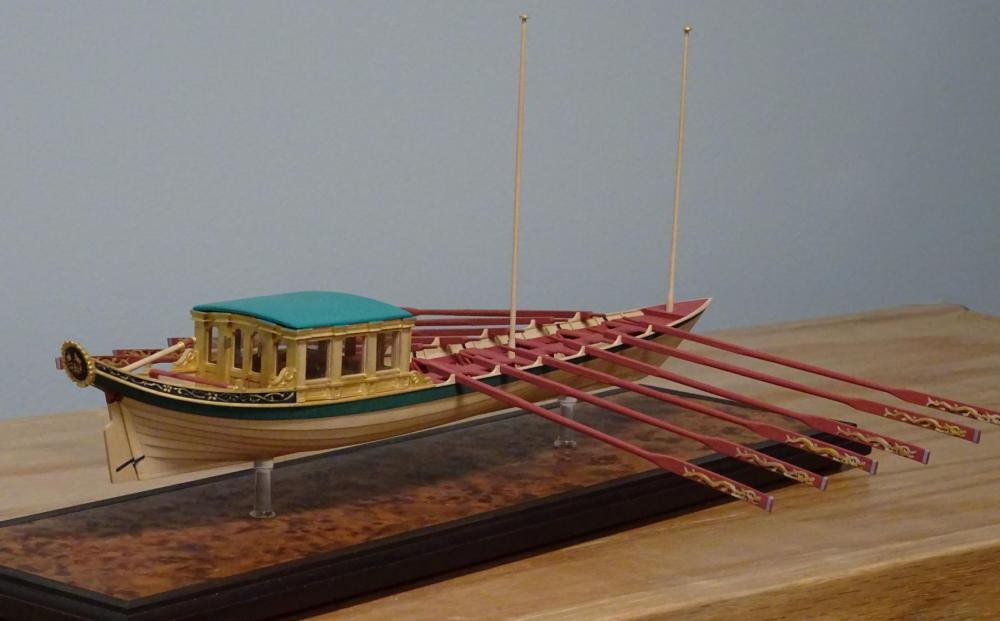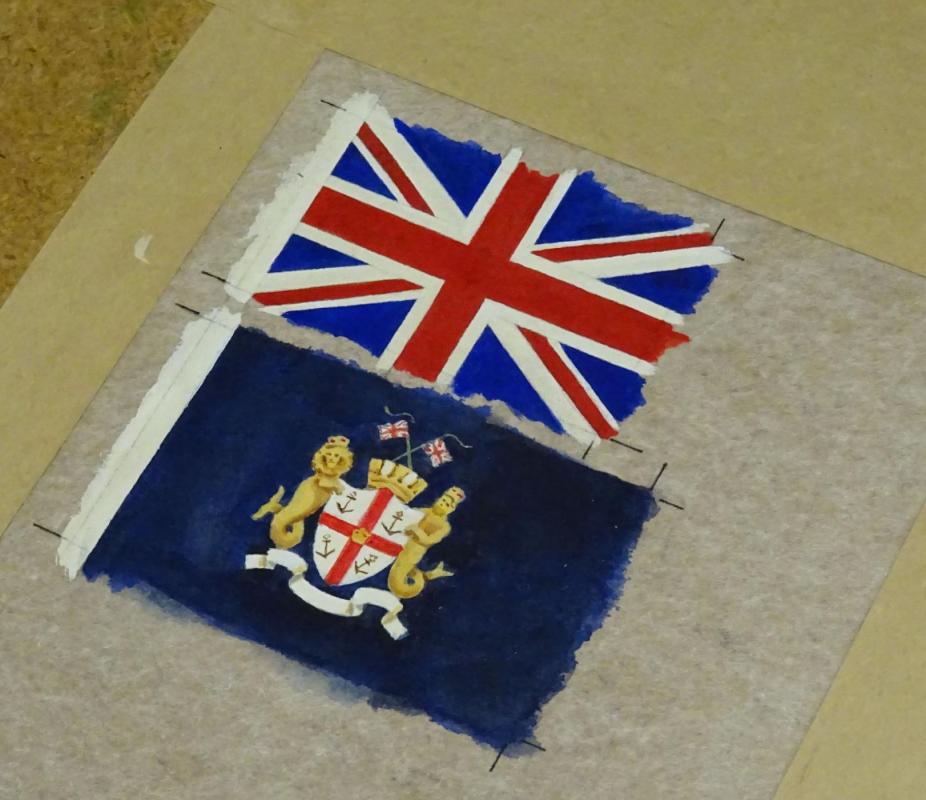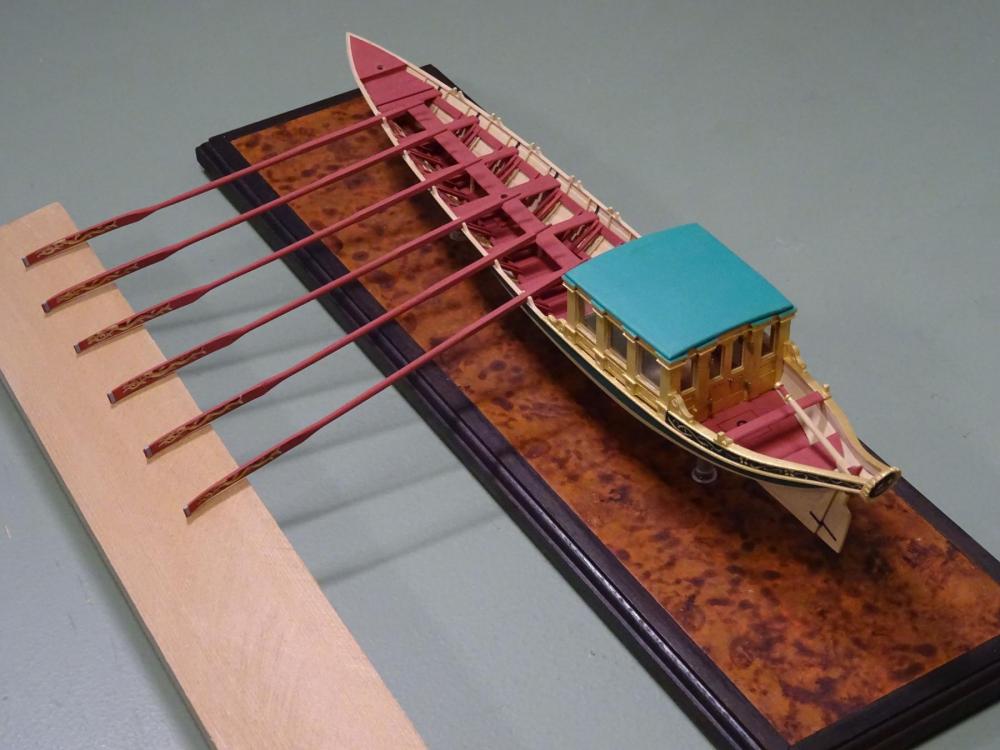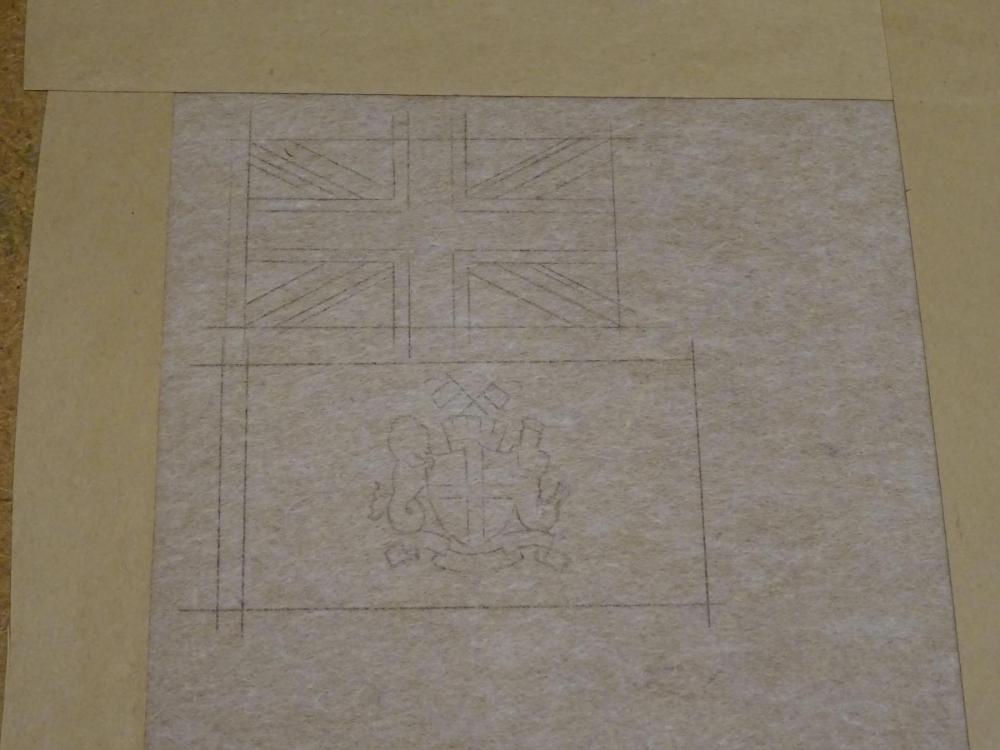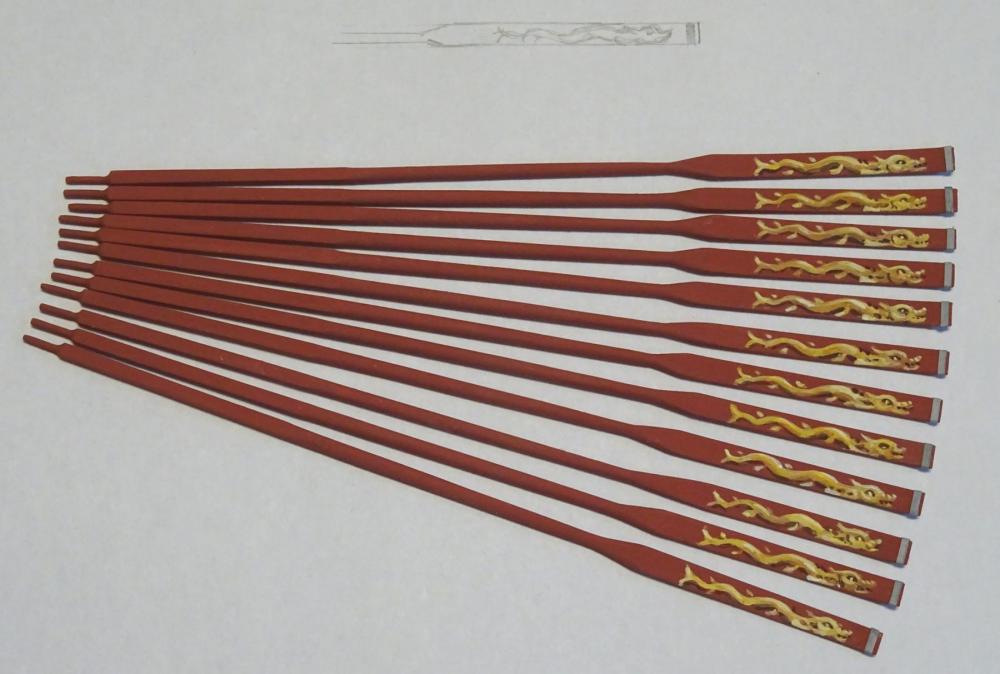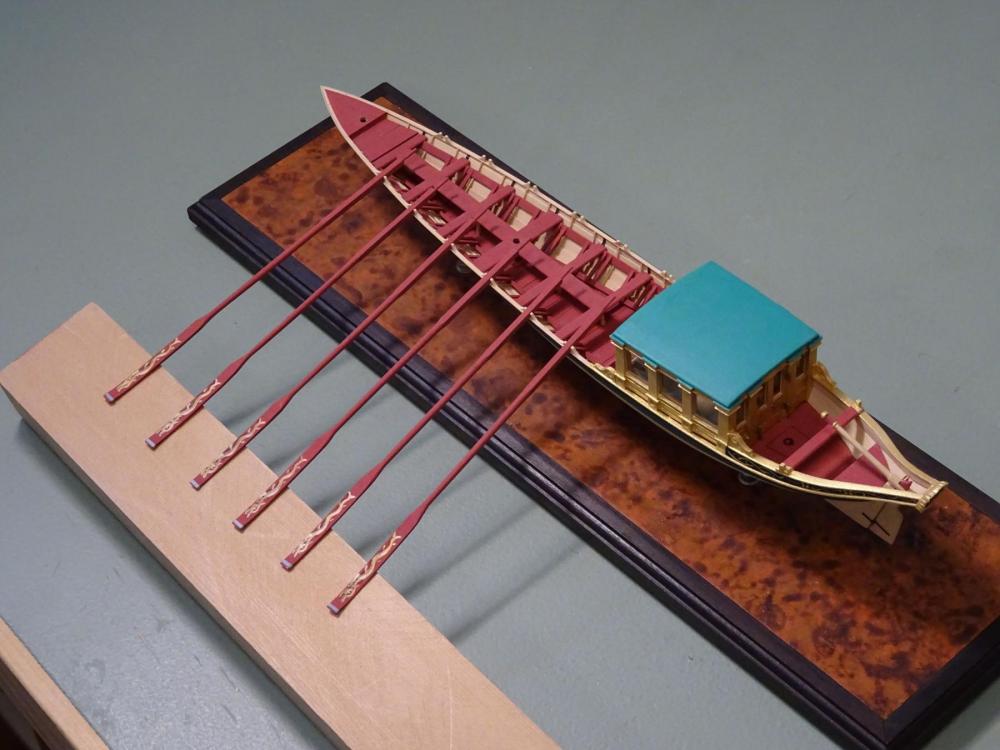-
Posts
13,274 -
Joined
-
Last visited
Content Type
Profiles
Forums
Gallery
Events
Everything posted by druxey
-

Caroline's bottom
druxey replied to GrantGoodale's topic in Building, Framing, Planking and plating a ships hull and deck
Very entertaining, Robin! There was also some other 18th century bottom preservative called 'pease'. I've not been able to determine what this was. Anyone any clues? -
Thank you, everyone, for your kind comments, compliments and questions. Your interest certainly spurred me on and the model was completed sooner than expected. What's next? When I have the time, another open boat, this time a Royal barge. In the meantime, I'm working on restoration of several yacht models and both writing and illustrating a book on modelling open boats. Part of the book will be an amplified version of this build log. It aims to cover both clinker and carvel construction. Joel: what keeps the oars up? Invisible oarsmen. Seriously, the sweeps are glued in position in the tholes and on the gunwale.
- 641 replies
-
- greenwich hospital
- barge
-
(and 1 more)
Tagged with:
-
Well, folks, we've come to the conclusion of this log. The Greenwich Hospital barge is about to row off, colors flying. Thanks to all who have looked in, 'liked', commented, complimented and discussed her. It's been quite the experience. I really appreciate the support of this electronic community over the past months. Thanks to each and every one of you, world-wide. So, what's next, I wonder?
- 641 replies
-
- greenwich hospital
- barge
-
(and 1 more)
Tagged with:
-
I suspect the number of reef bands differed depending on the depth of the topsail: fewer in smaller ships, more in larger ones. The upper illustration (unattributed) is from Volume IV, The Fully Framed Model by D. Antscherl, adapted from Steel's Rigging and Seamanship. The latter showed the topsail for a 20-gun ship. The TFFM illustration is for a 14- or 16-gun ship. For what size ship is Lees' illustration? I also notice that the reinforcements are different in the examples illustrated - Lees omits the top lining.
-
As usual, it's a pleasure to follow your progress, Frank. Seeing your scrap bin is a nice reminder that even expert modelmakers have a failure rate!
- 649 replies
-
- dunbrody
- famine ship
-
(and 2 more)
Tagged with:
-
Without hijacking this thread, I appreciate your input about CA adhesives, Kurt. I've always been highly suspicious of their longevity, but your experience with these is interesting and informative. Thanks! Glenn: your work continues to inspire and amaze. Keep those Saturday supplements coming, please!
-
I agree with Robin about dates and number of reef bands. The animation is terrific, Magnus!
-
Well, the sweeps are now fixed in position, after a rare weekend off work. Hopefully I made the right call on displaying them in this way. I still have the two ensigns to complete and fly on their staffs before calling it quits. I hope you enjoy the pictures.
- 641 replies
-
- greenwich hospital
- barge
-
(and 1 more)
Tagged with:
-
Yes, half the dolphins will be inverted. Live with it! I'm a bad model-maker.
- 641 replies
-
- greenwich hospital
- barge
-
(and 1 more)
Tagged with:
-
Self-criticism is good - but only if it spurs one to better efforts, not if it brings one to a stand-still. It's also good to have a goal to strive for, as well as moveable goal-posts!
-
Difficult decision. But you've a ship to complete first, so there's lots of time to make up your mind! Seriously, I find many decisions become clear if I stow the problem in my sub-conscious for a while.
-
Well, decision time for the sweeps! While 'feathered' is an attractive and perhaps obvious choice, I think I'll place the oars with blades vertical. Why? The dolphins draw the eye away from the boat too much and, by placing the blades vertically, one can see the transition from body to blade on the other side clearly. The viewer will only 'discover' the dolphins as his or her point of view changes. I really appreciate the time and trouble those of you took to give me input on this issue. It certainly helped clarifying my own thinking. Pictures later!
- 641 replies
-
- greenwich hospital
- barge
-
(and 1 more)
Tagged with:
-

Papegojan 1627 by mati - FINISHED - 1/48
druxey replied to mati's topic in - Build logs for subjects built 1501 - 1750
Lovely neat metalwork, Mati! -
Thanks for participating in the straw poll! I'm still dithering, but tending toward vertical orientation. Meanwhile, work on the ensigns continues. The first sides are painted. As these will be hanging naturally in folds, the coat of arms is more impressionistic than realistic. The 'white' is actually more a cream color.
- 641 replies
-
- greenwich hospital
- barge
-
(and 1 more)
Tagged with:
-
Well, any advantage to showing the sweeps in a more operational orientation? Opinions welcomed. The standards have been started. Some SilkSpan has been stretched (like watercolour paper) and the designs laid down using graphite paper. One is the Union Jack, the other is the Greenwich Hospital coat of arms.
- 641 replies
-
- greenwich hospital
- barge
-
(and 1 more)
Tagged with:
-
Thanks, Michael. In actual use, I agree that the blades would be more vertical, but I was using the City of London barge model as my example. Perhaps I need to try orienting them that way.... Oh, the indecision! Joel: not quite yet launch time: there are still two standards to make, hoist and fly.
- 641 replies
-
- greenwich hospital
- barge
-
(and 1 more)
Tagged with:
-
Have the users no shame? I hope that you get an apology at very least, Robin. That's a fine image, even in monochrome, by the way.
-
Well, a dozen dolphins done! I've secured the model permanently on the base and pedestals and set up a trial placement for the sweeps on one side. Comments, anyone?
- 641 replies
-
- greenwich hospital
- barge
-
(and 1 more)
Tagged with:
-
Enjoy your new toy - I mean, tool! Nice progress on your frames as well, Frank.
- 649 replies
-
- dunbrody
- famine ship
-
(and 2 more)
Tagged with:
About us
Modelshipworld - Advancing Ship Modeling through Research
SSL Secured
Your security is important for us so this Website is SSL-Secured
NRG Mailing Address
Nautical Research Guild
237 South Lincoln Street
Westmont IL, 60559-1917
Model Ship World ® and the MSW logo are Registered Trademarks, and belong to the Nautical Research Guild (United States Patent and Trademark Office: No. 6,929,264 & No. 6,929,274, registered Dec. 20, 2022)
Helpful Links
About the NRG
If you enjoy building ship models that are historically accurate as well as beautiful, then The Nautical Research Guild (NRG) is just right for you.
The Guild is a non-profit educational organization whose mission is to “Advance Ship Modeling Through Research”. We provide support to our members in their efforts to raise the quality of their model ships.
The Nautical Research Guild has published our world-renowned quarterly magazine, The Nautical Research Journal, since 1955. The pages of the Journal are full of articles by accomplished ship modelers who show you how they create those exquisite details on their models, and by maritime historians who show you the correct details to build. The Journal is available in both print and digital editions. Go to the NRG web site (www.thenrg.org) to download a complimentary digital copy of the Journal. The NRG also publishes plan sets, books and compilations of back issues of the Journal and the former Ships in Scale and Model Ship Builder magazines.



